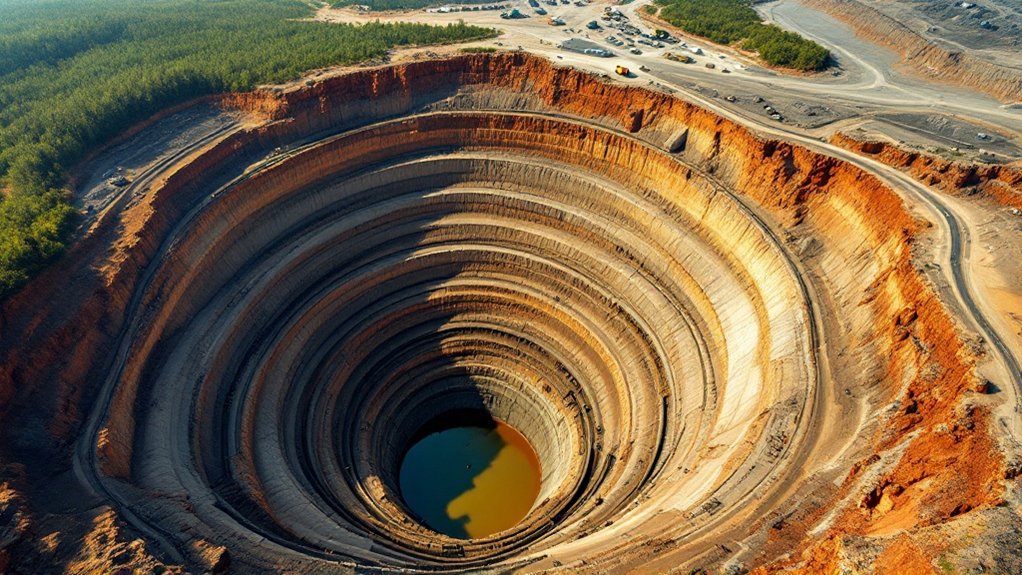Natural resource depletion has reached alarming levels, with global consumption skyrocketing to 92 billion tons – triple what it was in 1970. One-third of Earth’s soils are shot, freshwater use keeps climbing, and fossil fuels are being burned like there’s no tomorrow. The consequences? A million species facing extinction, acidifying oceans, and communities forced to abandon their homes. Sure, renewable energy‘s growing at a snail’s pace, but the deeper story reveals some seriously unsettling trends.

As humanity’s insatiable appetite for resources continues to grow, the Earth is struggling to keep up. Since 1970, global material consumption has tripled to a staggering 92 billion tons. Funny how we thought the planet’s resources were infinite. Spoiler alert: they’re not.
The numbers are sobering. One-third of the world’s soils are degraded, freshwater use keeps climbing by 1% annually, and we’re burning through fossil fuels like there’s no tomorrow – which, at this rate, might be more literal than we’d like. Meanwhile, developed countries keep consuming resources like they’ve got a spare planet stashed away somewhere. Resource extraction and processing now contribute to half of greenhouse emissions worldwide. The rapid expansion of industrial growth continues to accelerate the depletion of our vital resources.
The environmental fallout is hitting hard. Climate change is ramping up, thanks to our addiction to fossil fuels. Marine life is dealing with increasingly acidic oceans, while one million species are teetering on the edge of extinction. It’s like we’re hosting a farewell party for biodiversity, and nobody’s having fun. The UK’s marine ecosystems are particularly vulnerable as rising temperatures devastate coastal waters.
Nature’s farewell party is in full swing, with species vanishing and oceans turning sour while we keep the fossil fuel music playing.
The economic impact? Let’s just say it’s not pretty. Raw material costs are shooting through the roof, and resource-dependent countries are watching their economies wobble like a house of cards in a hurricane. Agricultural yields are dropping, and food security is becoming more of a wish than a reality.
Communities are feeling the squeeze too. People are being forced to abandon their homes due to resource scarcity, while others are dealing with health issues from pollution. The gap between resource-rich and resource-poor regions is turning into a canyon, and traditional resource-based livelihoods are vanishing faster than ice cream on a hot sidewalk.
There’s a silver lining, though it’s more like a thin thread than a cloud. Renewable energy is growing, albeit at a snail’s pace, making up just 11% of the global energy mix.
Some promising solutions are emerging: circular economy principles, sustainable resource management, and technological innovations for efficiency. But let’s be real – unless we get serious about international cooperation and conservation, we’re in for a rough ride. The clock is ticking, and Mother Nature isn’t known for giving extensions.








